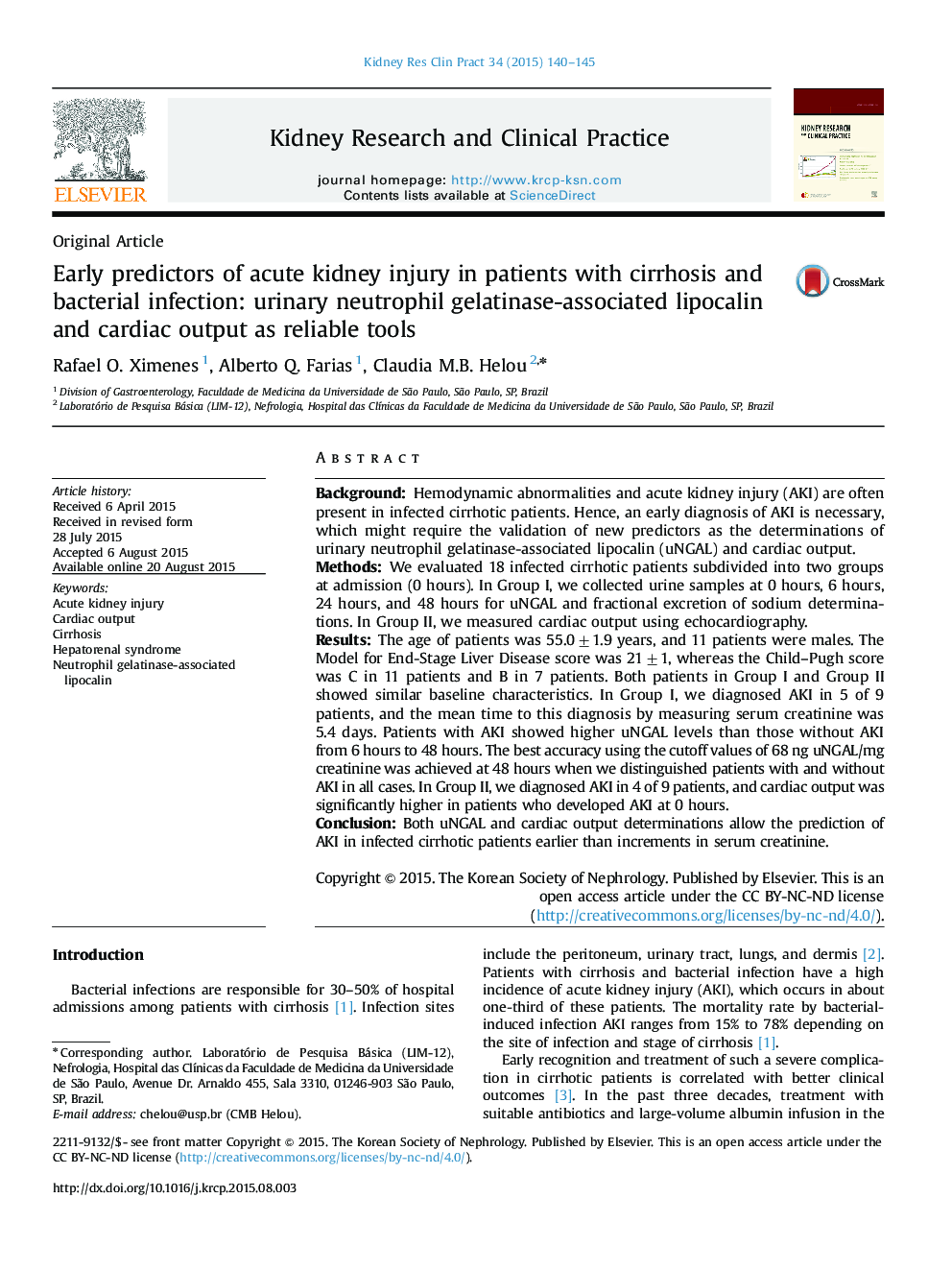| Article ID | Journal | Published Year | Pages | File Type |
|---|---|---|---|---|
| 3890836 | Kidney Research and Clinical Practice | 2015 | 6 Pages |
BackgroundHemodynamic abnormalities and acute kidney injury (AKI) are often present in infected cirrhotic patients. Hence, an early diagnosis of AKI is necessary, which might require the validation of new predictors as the determinations of urinary neutrophil gelatinase-associated lipocalin (uNGAL) and cardiac output.MethodsWe evaluated 18 infected cirrhotic patients subdivided into two groups at admission (0 hours). In Group I, we collected urine samples at 0 hours, 6 hours, 24 hours, and 48 hours for uNGAL and fractional excretion of sodium determinations. In Group II, we measured cardiac output using echocardiography.ResultsThe age of patients was 55.0±1.9 years, and 11 patients were males. The Model for End-Stage Liver Disease score was 21±1, whereas the Child–Pugh score was C in 11 patients and B in 7 patients. Both patients in Group I and Group II showed similar baseline characteristics. In Group I, we diagnosed AKI in 5 of 9 patients, and the mean time to this diagnosis by measuring serum creatinine was 5.4 days. Patients with AKI showed higher uNGAL levels than those without AKI from 6 hours to 48 hours. The best accuracy using the cutoff values of 68 ng uNGAL/mg creatinine was achieved at 48 hours when we distinguished patients with and without AKI in all cases. In Group II, we diagnosed AKI in 4 of 9 patients, and cardiac output was significantly higher in patients who developed AKI at 0 hours.ConclusionBoth uNGAL and cardiac output determinations allow the prediction of AKI in infected cirrhotic patients earlier than increments in serum creatinine.
